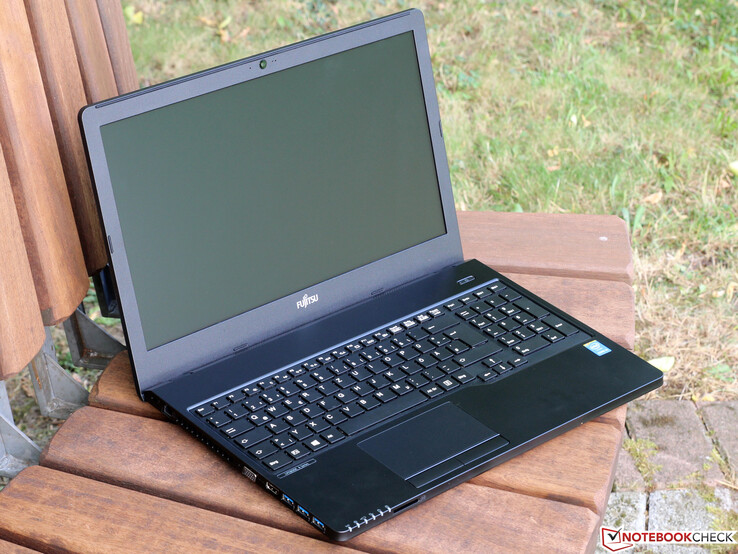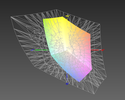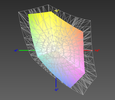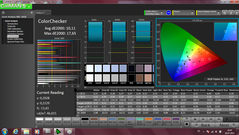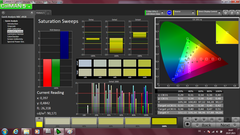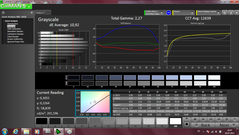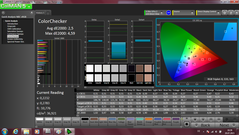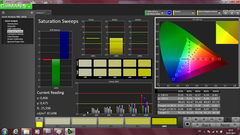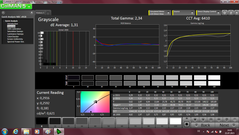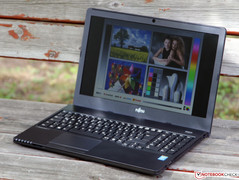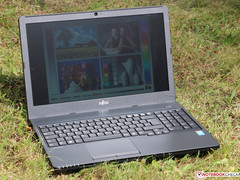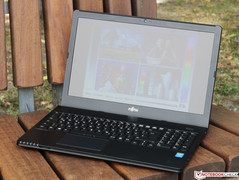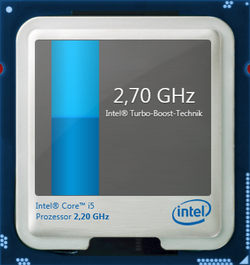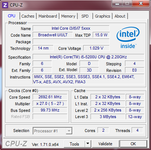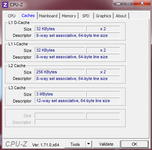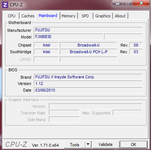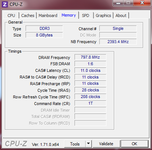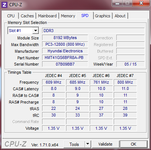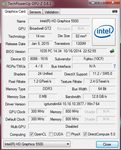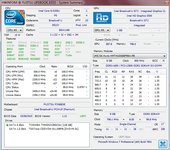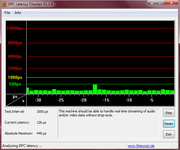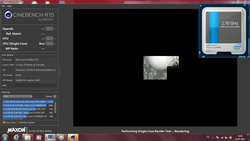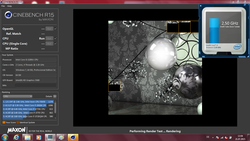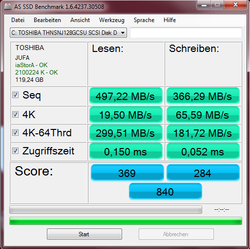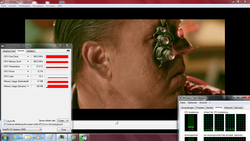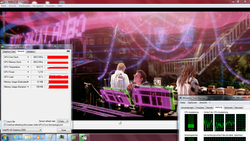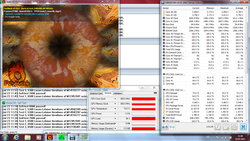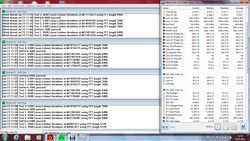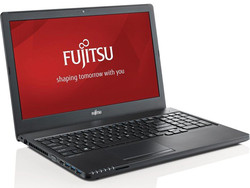Fujitsu Lifebook A555 Notebook Review

For the original German review, see here.
Those looking for a basic office device for studies, job or private office work do not have to invest huge sums in a premium-range business laptop. Decent build, solid input devices and low emissions are already found in mid-range models, such as the ProBook 400 (HP), the Latitude E5000 (Dell) or the ThinkPad E/L (Lenovo) series - A highly competitive market sector where the new LifeBook A555 from Fujitsu now also wants to get into.
Our review sample has the classic 15.6-inch format, and is available in Germany with prices ranging from 550 to 900 Euros (~$604 to ~$988) depending on the configuration. All versions rely on Intel's Core i5-5200U processor, but differ in working memory (4/8 GB) and the installed storage device (HDD/SSHD/SSD). Fujitsu also offers optional models with a dedicated Radeon R7-M260 GPU and higher screen resolution (Full HD instead of WXGA) that are sold under the name of LifeBook A555G. The specs of our current review sample can be seen in the chart below.
Comparison with the Precursor
As so often, this is not an entirely redesigned laptop - Fujitsu has adopted the fundamental build of the former A544, and we would refer to its review at this point. Despite its solid construction (3.1 centimeters height; 2.3 kilograms weight / ~1.2-in height; ~5.1-lb weight), the chassis made of black plastic makes a somewhat pliable impression. At least its build is impeccable. The casing's design has been slightly retouched; for example, its outer shell is made of fewer single parts, giving the design a more modern and better quality appearance ("unibody look").
The input devices have also been improved. The pleasantly crisp keyboard's slight rocking has been almost completely eliminated, and the unsatisfactory ClickPad design of the touchpad has been replaced by two dedicated mouse keys. It is good that Fujitsu did not ignore the fierce complaints regarding the LifeBook A544 - some other manufacturers could learn from this.
Display
The relatively low price of the A555 is not clear considering the options of available screens: The technical data of the WXGA model (contrast: 300:1; brightness: 200 cd/m²) point to an inferior TN screen. The same is true of the optional Full HD screen (300:1; 220 cd/m²). Furthermore, the latter is only offered in conjunction with a dedicated Radeon GPU so that our review sample has to be satisfied with a low 1366x768 pixels (100 ppi). Multitasking or working with intricate software is only possible to a very limited extent in view of the limited workspace. Therefore, connecting an additional, external monitor would be recommended for increasing the productivity.
Unfortunately, the screen's low resolution is not its only disadvantage. With a maximum measured brightness of 174 cd/m², the LifeBook not only fails the manufacturer's modest specification, but also lags behind all other competition. The backlight will usually have to be set to maximum in normal office environments to ensure an acceptable reproduction. However, problems will not be avoided when sitting directly beside a window or another strong light source.
| |||||||||||||||||||||||||
Brightness Distribution: 87 %
Center on Battery: 180 cd/m²
Contrast: 346:1 (Black: 0.52 cd/m²)
ΔE ColorChecker Calman: 10.11 | ∀{0.5-29.43 Ø4.79}
ΔE Greyscale Calman: 10.92 | ∀{0.09-98 Ø5}
62.9% sRGB (Argyll 1.6.3 3D)
39.8% AdobeRGB 1998 (Argyll 1.6.3 3D)
43.1% AdobeRGB 1998 (Argyll 3D)
62.8% sRGB (Argyll 3D)
41.72% Display P3 (Argyll 3D)
Gamma: 2.27
CCT: 12639 K
| Fujitsu Lifebook A555 TN-Panel (1366x768) | Lenovo ThinkPad Edge E550-20DGS00300 TN-Panel (1920x1080) | HP ProBook 450 G2 L3Q27EA TN-Panel (1366x768) | Dell Latitude E5550 IPS-Panel (1920x1080) | |
|---|---|---|---|---|
| Display | -2% | -9% | 60% | |
| Display P3 Coverage (%) | 41.72 | 40.69 -2% | 37.91 -9% | 67.8 63% |
| sRGB Coverage (%) | 62.8 | 61.1 -3% | 56.9 -9% | 97.5 55% |
| AdobeRGB 1998 Coverage (%) | 43.1 | 42.06 -2% | 39.2 -9% | 69.8 62% |
| Screen | 2% | 2% | 70% | |
| Brightness middle (cd/m²) | 180 | 228 27% | 254 41% | 343 91% |
| Brightness (cd/m²) | 174 | 210 21% | 225 29% | 320 84% |
| Brightness Distribution (%) | 87 | 89 2% | 84 -3% | 88 1% |
| Black Level * (cd/m²) | 0.52 | 0.688 -32% | 0.72 -38% | 0.36 31% |
| Contrast (:1) | 346 | 331 -4% | 353 2% | 953 175% |
| Colorchecker dE 2000 * | 10.11 | 10.04 1% | 10.73 -6% | 3.15 69% |
| Greyscale dE 2000 * | 10.92 | 10.65 2% | 11.23 -3% | 3.65 67% |
| Gamma | 2.27 97% | 2.53 87% | 2.21 100% | 2.62 84% |
| CCT | 12639 51% | 12807 51% | 13321 49% | 7101 92% |
| Color Space (Percent of AdobeRGB 1998) (%) | 39.8 | 38.8 -3% | 36.2 -9% | 63.3 59% |
| Color Space (Percent of sRGB) (%) | 62.9 | 97.4 55% | ||
| Total Average (Program / Settings) | 0% /
1% | -4% /
-1% | 65% /
68% |
* ... smaller is better
As expected, the quality of LG's screen (LP156WHB-TLB1) is a disappointing TN screen. Both the black level (0.52 cd/m²) and contrast ratio (346:1) are on a correspondingly low standard, and the image looks relatively pale and weak. By comparison: A high-quality IPS screen, such as the one Dell has equipped its Latitude E5550 with, achieves about three times higher contrast with rates of approximately 1000:1. Admittedly, the E5550 is also positioned in a somewhat higher price range despite its otherwise similar configuration.
Photographers and image editors are definitely not the LifeBook's declared target group. With DeltaE rates of over 10 in colors and grayscale levels, our review sample does not score any better than a typical consumer laptop from the low-end sector. Although the initially visible bluish tint disappears after calibration and the DeltaE deviations drop to an acceptable level, the very limited color space (AdobeRGB: 62.9%; sRGB: 39.8%) prevents a truly useful result. With increasing saturation, red tones in particular can hardly be differentiated.
Although it is possible to work with the A555 outdoors, the screen's far too low brightness makes it difficult. Once again, the screen's fully AR-coated surface proves helpful here. However, the user should look for the shadiest possible spot and avoid direct sunlight. In view of a potential successor, we deem Fujitsu duty bound to install a stronger backlight with at least 220 to 250 cd/m² even in its basic configuration.
Outdoors (lightly overcast)
Typical of TN screens, the user can only enjoy an unaltered image when looking almost straight at the screen. The slightest shift up or down results in colors inverting and a significant loss of contrast. The screen copes better with lateral movements, but remains clearly behind IPS-based models. Consequently, several people simultaneously viewing the LifeBook can only be recommended to a very limited degree.
Performance
While standard voltage processors (TDP: 37 watts) from the Haswell generation were still used in the LifeBook A544, the A555 is equipped with economical ULV models (TDP: 15 watts) from the Broadwell generation. Their considerably lower power dissipation is not only due to the streamlined 14-nanometer process, but also to the reduced core frequencies. While the Core i5-4200M in the precursor still clocked at 2.5 to 3.1 GHz, the new Core i5-5200U achieves only 2.2 to 2.7 GHz. We will have to wait and see to what extent the higher per-MHz performance of the Broadwells can compensate this disadvantage.
Normally office applications do not have particularly high graphic requirements, and thus the LifeBook has dispensed with a dedicated GPU and all 3D calculations are performed by the integrated HD Graphics 5500 (24 EUs; 300 to 900 MHz). Users who want more can choose the A555G sister model that Fujitsu has equipped with an AMD Radeon R7 M260 and a 2 GB DDR3 memory.
Equipped with only an 8-GB DDR3L-1600 module, the memory controller operates in the slower single-channel mode, which reduces the 3D performance by approximately 20 to 25%. On the other hand, the buyer can simply upgrade the RAM by inserting another 4 or 8 GB SODIMM. The dual-channel mode also functions (with marginal losses) even with an asymmetrical configuration using two different sized modules. A 2.5-inch SSD with a capacity of 128 GB serves as the storage device.
Processor
Thanks to the almost perfect utilization of the Turbo Boost headroom specified by the manufacturer, the Core i5-5200U achieves exactly the performance level that we expected. The A555 performs multi-thread benchmarks, such as Cinebench R11.5, at a stable 2.5 GHz; the dual-core CPU maintains a clock of 2.6 to 2.7 GHz in the single thread tests (battery and AC mode). Thus, the performance corresponds to rival models, such as HP's ProBook 450 G2 based on the same CPU, within the frame of measurement tolerance. The Core i5-5300U in the Latitude E5550 calculates almost 10% faster, whereas the ThinkPad E550 lags behind by about 20% with its Core i3-5005U.
Fujitsu is not the first manufacturer that has changed one of its model series from standard to ultra-low voltage processors - and the LifeBook A555 is not the first laptop that is inferior to its direct precursor in terms of CPU power. Approximately 10 to 15% separate the Core i5-5200U from the previous Core i5-4200M. Even if temperature development and battery life benefit from the economical hardware (more about that later), not every buyer will be thrilled about this outcome.
| X264 HD Benchmark 4.0 | |
| Pass 1 (sort by value) | |
| Fujitsu Lifebook A555 | |
| Lenovo ThinkPad Edge E550-20DGS00300 | |
| Pass 2 (sort by value) | |
| Fujitsu Lifebook A555 | |
| Lenovo ThinkPad Edge E550-20DGS00300 | |
Storage Device
Depending on the configuration, Fujitsu has installed a 2.5-inch HDD, SSHD or SSD (no other mSATA/M.2 slots present) in its A555. Our test model comes with a 128 GB flash storage. To be more precise, it is the THNSNJ128GCSU model from Toshiba's latest HG6 series. Toshiba manufactures the controller and memory chips, and they are considered as quite powerful and reliable to date.
At least we can confirm the good performance after our assessments. With almost 500 Mbps, the SSD comes close to the limit of the SATA III interface in sequential read. The write rate of 366 Mbps is also impressive in relation to the fairly low capacity. The particularly important for routine 4K performance, i.e. the speed of small file transfer, is in the solid midfield of modern SSDs.
System Performance
The extremely high system responsiveness is primarily due to the SSD that ensures fast program starts and short boot times (20 seconds to the Windows 7 desktop). The processor also has enough reserves for all routine tasks, as well as more demanding software and (light) multitasking. Of course, the economical dual-core finds its limits eventually in dozens of browser tabs and simultaneous installations despite Hyperthreading. A much more energy hungry quad-core would offer significant advantages.
The PCMark 7 and 8 scores confirm our subjective impression, and position the LifeBook roughly on par with the similarly equipped HP and Dell rivals. Once again, the ThinkPad Edge E550 lags behind slightly, which we have so far tested only in the entry-level configuration with a Core i3 processor and a conventional hard drive.
| PCMark 7 - Score (sort by value) | |
| Fujitsu Lifebook A555 | |
| Lenovo ThinkPad Edge E550-20DGS00300 | |
| Dell Latitude E5550 Broadwell | |
| PCMark 7 Score | 4147 points | |
| PCMark 8 Home Score Accelerated v2 | 3035 points | |
| PCMark 8 Creative Score Accelerated v2 | 3150 points | |
| PCMark 8 Work Score Accelerated v2 | 4202 points | |
Help | ||
Graphics Card
Although the HD Graphics 5500 is approximately 20% faster than the former HD Graphics 4400 (Haswell), the Broadwell GPU is situated in the absolute low-end range. 900 points in 3DMark 11 roughly correspond to the performance of a 5 year old mid-range graphics card, such as the Mobility Radeon HD 5650 or GeForce GT 540M. Users who want more should consider installing a second memory module (about 25% higher performance) or opt for the aforementioned LifeBook A555G with a dedicated Radeon R7-M260 GPU (about 100% higher performance).
The HD Graphics 5500 compensates for its lower power with its extensive multimedia features. The video engine even supports the latest H.265/HEVC codec launched by Broadwell, but only specialized fixed function units are sometimes used. The shaders of the HD 5500 have to perform some of the calculations with only moderate efficiency. Furthermore, the GPU load increases to almost 100% in 4K videos already at a low bit rate ("Tears of Steel", 2.7 Mbit/s), and occasional stutters are noticed.
| 3DMark 11 - 1280x720 Performance GPU (sort by value) | |
| Fujitsu Lifebook A555 | |
| Lenovo ThinkPad Edge E550-20DGS00300 | |
| HP ProBook 450 G2 L3Q27EA | |
| Dell Latitude E5550 Broadwell | |
| Lenovo ThinkPad E450 20DDS01E00 | |
| 3DMark 06 Standard Score | 5992 points | |
| 3DMark 11 Performance | 1000 points | |
| 3DMark Ice Storm Standard Score | 39486 points | |
| 3DMark Cloud Gate Standard Score | 4525 points | |
| 3DMark Fire Strike Score | 565 points | |
Help | ||
Gaming Performance
Only a few games can be rendered smoothly with the HD Graphics 5500 even using minimum detail settings and a resolution of 1024x768 pixels. Sophisticated graphic smash hits, such as "Batman: Arkham Knight" or "The Witcher 3", hardly exceed a one-digit frame rate even in minimum preset. However, older games like "Sims 4" or "Counter Strike: GO" can be played well even in medium settings. More benchmarks of other HD 5500 devices can be found in our database.
| low | med. | high | ultra | |
|---|---|---|---|---|
| Dota 2 (2013) | 56.3 | 33.2 | 14.3 | |
| Evolve (2015) | 12.1 | 8.9 | ||
| Dirt Rally (2015) | 69.6 | 18.4 | 12.5 |
Emissions
System Noise
An economical ULV processor with integrated graphics in a roughly 3-centimeter (~1.2-in) thick, 15-inch casing - cooling should not be a problem. In fact, the casing fan is almost never active during routine use so that the laptop runs silently.
However, under load our review sample emphatically attracts attention with 36.7 to 38.3 dB(A), at least when comparing the noise level with that of the ProBook 450 G2 (32.9 to 34.3 dB(A)) or ThinkPad E550 (32.8 to 33.8 dB(A)). However, in defense of the A555 we have to point out that this test was performed in midsummer- with room temperatures of 25 to 26 °C (~77 to 79 °F) - a disadvantage that we will naturally consider in the rating.
Noise level
| Idle |
| 29 / 29 / 29 dB(A) |
| Load |
| 36.7 / 38.3 dB(A) |
 | ||
30 dB silent 40 dB(A) audible 50 dB(A) loud |
||
min: | ||
Temperature
The casing did not heat up excessively in either idle mode or during load despite the difficult test conditions. A minor hot spot of just over 40 °C (~104 °F) developed on the device's left in the area of the vent during the stress test. However, this will hardly affect routine use, and the device can be used on the lap without any hesitation.
The Core i5-5200U's sensors recorded a core temperature of uncritical 70 °C (~158 °F) after one hour of load via Prime95 and FurMark. The CPU throttled lightly to 1.7 GHz because it reached the TDP limit of 15 watts. In such cases, the chip's central PCU (power control unit) prioritizes the GPU, and it can even almost maintain its maximum Turbo frequency at approximately 850 MHz.
(±) The maximum temperature on the upper side is 42.7 °C / 109 F, compared to the average of 34.3 °C / 94 F, ranging from 21.2 to 62.5 °C for the class Office.
(±) The bottom heats up to a maximum of 41.3 °C / 106 F, compared to the average of 36.8 °C / 98 F
(+) In idle usage, the average temperature for the upper side is 30.6 °C / 87 F, compared to the device average of 29.5 °C / 85 F.
(+) The palmrests and touchpad are reaching skin temperature as a maximum (34.9 °C / 94.8 F) and are therefore not hot.
(-) The average temperature of the palmrest area of similar devices was 27.6 °C / 81.7 F (-7.3 °C / -13.1 F).
Speakers
Unfortunately, not much has changed about the quality of the integrated speakers since our last test. The volume and treble reproduction of the small stereo speakers are quite satisfactory, but the sound lacks force in the mids and low tone range. However, they are definitely sufficient for office purposes - especially since it is possible to connect external speakers or headphones for music or movies (via 3.5-millimeter jack or HDMI).
Energy Management
Power Consumption
Unlike the Lifebook A544 (5.4 to 8.2 watts), the A555's idle power consumption has decreased only marginally - an unsurprising development. HP's ProBook 450 G2 (2.4 to 5.0 watts) and Lenovo's ThinkPad E550 (3.3 to 7.0 watts) have obviously done a considerably better job in utilizing the energy savings potential of the Broadwell platform.
The A555 settles at roughly 30 watts during load, which is a typical rate for laptops of this size and configuration. We also recorded peak rates of almost 40 watts for short periods of about 30 seconds during the stress test before the processor's TDP limitation took effect. Since Fujitsu has included a generously sized 65-watt power supply, such peaks will not be a problem.
| Off / Standby | |
| Idle | |
| Load |
|
Key:
min: | |
Battery Runtime
The size of LifeBook's 46 Wh battery is average; some rivals like the Latitude E5550 (51 Wh) have a somewhat larger model and others like the ProBook 450 G2 (40 Wh) a somewhat smaller battery.
This capacity is enough to browse on the Internet or render HD videos from the hard drive for approximately 6 hours using an adapted screen brightness (approximately 150 cd/m²). A whole workday without the power supply should even be possible when dimming the backlight a bit further or taking occasional standby breaks. Interestingly, the A555 has a similar endurance as the ThinkPad E550 although it is equipped with a marginally larger battery and lower idle consumption.
Also noteworthy: Thanks to the strong power supply, the completely depleted battery is almost fully recharged in just one and a half hours.
| Fujitsu Lifebook A555 46 Wh | Lenovo ThinkPad Edge E550-20DGS00300 48 Wh | HP ProBook 450 G2 L3Q27EA 40 Wh | Dell Latitude E5550 Broadwell 51 Wh | |
|---|---|---|---|---|
| Battery runtime | 2% | -7% | ||
| Reader / Idle (h) | 9.5 | 12.5 32% | 12 26% | |
| H.264 (h) | 6.5 | 5.5 -15% | 6.5 0% | |
| WiFi v1.3 (h) | 5.7 | 5.2 -9% | ||
| Load (h) | 2.1 | 2.1 0% | 1.1 -48% | |
| WiFi (h) | 6.6 | 7.6 | 6.4 |
Pros
Cons
Verdict
A 750 Euros (~$823) office laptop should have more to offer than just up-to-date hardware and silent operation- a requirement that Fujitsu's LifeBook A555 fulfills only in part. Although aspects such as high application performance and the quite decent input devices are on the positive side, there are also some major shortcomings.
Undoubtedly, the laptop's greatest drawback is the overall disappointing screen. While it may be possible to overlook the mediocre color reproduction and weak contrast ratio in view of the target group, the far too low maximum brightness as well as the poor WXGA resolution will prove to be a true disadvantage in everyday use. Although Fujitsu has an optional Full HD screen in its series, it is also only based on a rudimentary TN screen and only available in conjunction with a stronger graphics chip. We would also have expected more from the casing. The impeccable build is impressive, but the chassis is very bulky in relation to the hardware, and it is also slightly pliable in some places. Other manufacturers shine with special upgrade options (mSATA/M.2 slot) or higher-quality light metals in this price range.
All said, the LifeBook A555 does not achieve the coveted purchase recommendation - which could still change should the price drop noticeably in the next few weeks and months. Currently the competition has more attractive offers in the form of the HP ProBook 450 G2, the Lenovo ThinkPad E550, and the somewhat more expensive Dell Latitude E5550.
Fujitsu Lifebook A555
- 02/25/2016 v5 (old)
Till Schönborn




